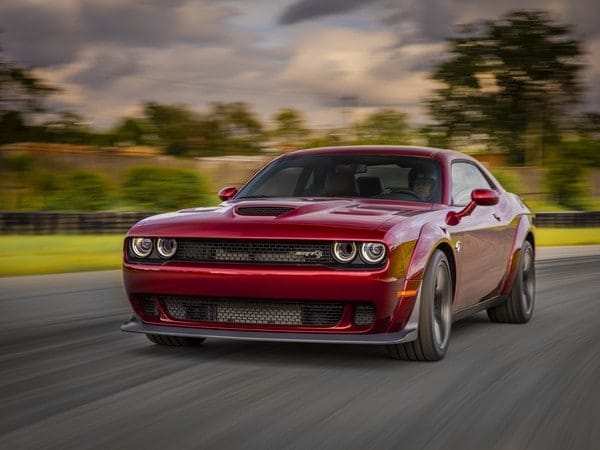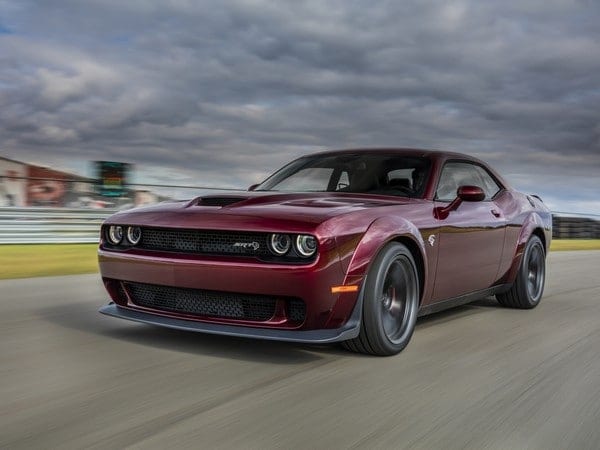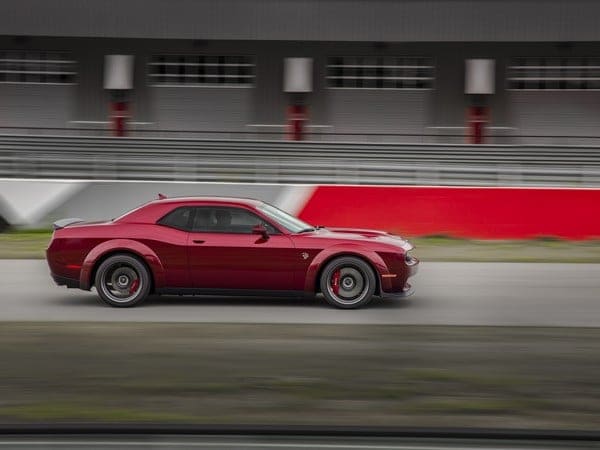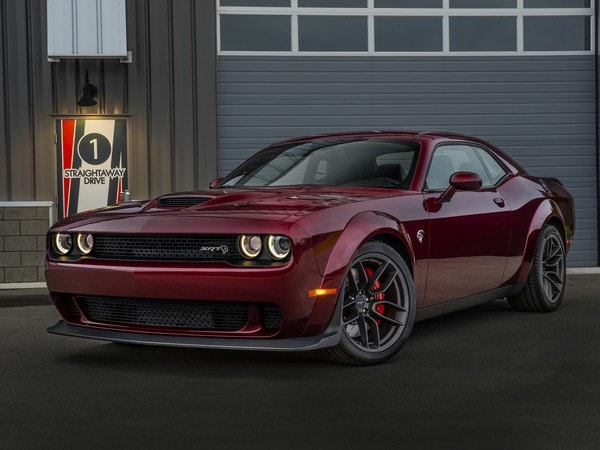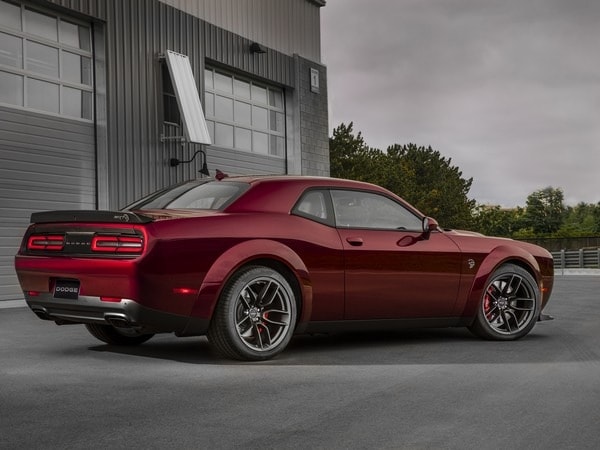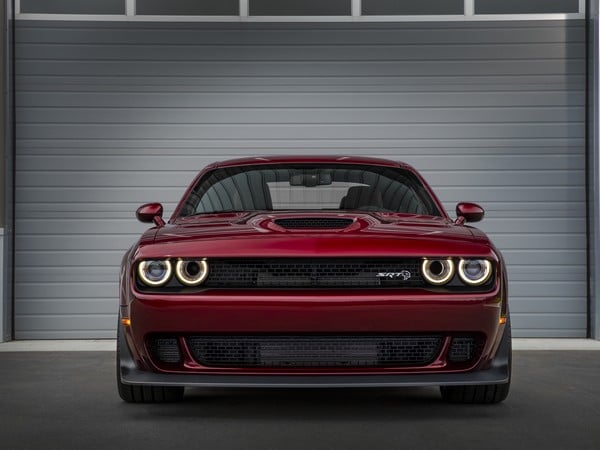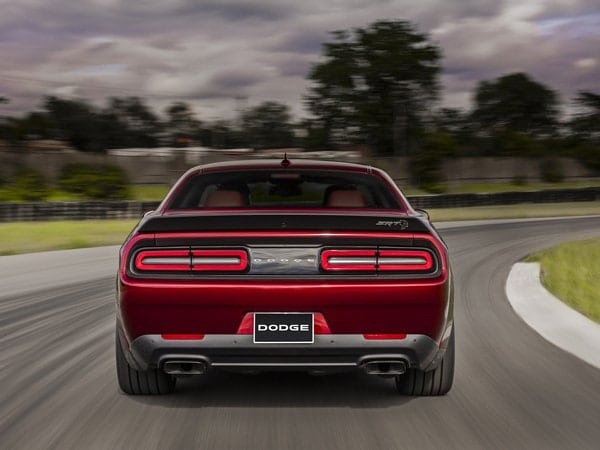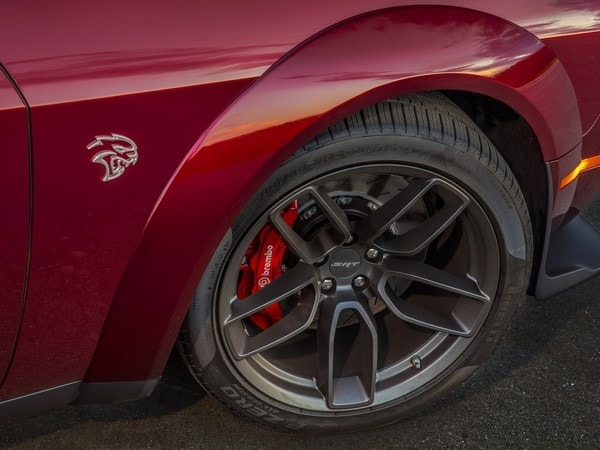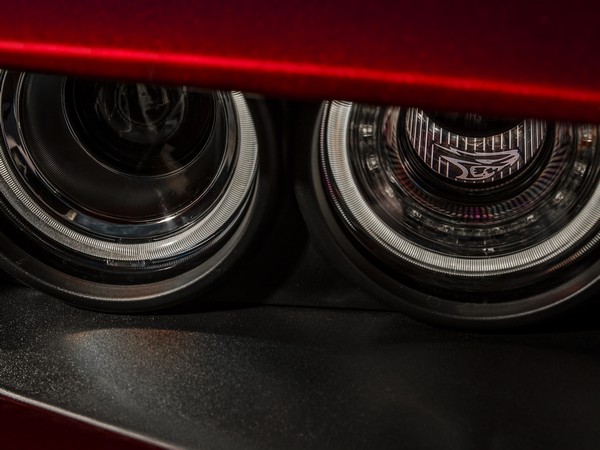When Dodge unleashed the Demon edition of the Challenger, it looked like the final chapter in the Hellcat saga. After all, it would be hard to top a Challenger with as much as 840 horsepower from an extreme version of that supercharged 6.2-liter Hemi V-8, in a dragstrip-oriented car capable of covering a quarter-mile in less than 10 seconds.
But the go-faster specialists in the Street and Racing Technology (SRT) garage aren’t through with the Hellcat, and for 2018 they’ve engineered a Challenger variant that’s aimed at reducing track day and autocross lap times. Dodge calls it the Challenger SRT Hellcat Widebody.
Basically, the Widebody package adapts the Demon fender flares to cover a wider set of wheels—20 x 11 inches versus 20 x 9.5 inches for the standard Hellcat (if any Hellcat can be called standard). The forged alloy five-spoke wheels wear 305/35 ZR-20 Pirelli P-Zero performance tires, compared to the regular Hellcat’s 275/40 ZR-20.
This adds up to a wider footprint, hence the Demon fender flares, which expand the Challenger’s width by 3.5 inches, to a lane-filling 79.2 inches. The Widebody designation is essentially truth in labeling, and the package gives the Challenger the same squat, muscular look that distinguishes the Demon.
The SRT team was apparently content to refrain from changes to the Challenger Hellcat suspension, but there have been tweaks to the electric rack-and-pinion steering, giving the driver the option of system pre-sets—Street, Sport, and Track—in the SRT Drive Modes.
Also: Get your first look at the new and redesigned cars of 2018
Grip galore
Output of the Hellcat V-8 is unchanged, 707 horsepower at 6,200 rpm, 650 lb-ft of torque at 4,800, paired with either a 6-speed Tremec manual or 8-speed automatic. Nevertheless, Dodge predicts a number of performance upticks for the Widebody, based largely on the increased grip delivered by the more aggressive tires.
For example, the SRT troops anticipate a quarter-mile elapsed time of 10.9 seconds, three tenths of a second quicker than the ET claimed for the standard Hellcat. Similarly, engineers claim a substantial skidpad improvement, close to the magic 1g threshold—from 0.94 to 0.97 lateral g.
Where the increased adhesion will pay biggest benefits, according to Dodge, is at road circuit track days and autocross time trials. Running the Widebody back to back against a standard Challenger Hellcat on a 1.7-mile FCA handling circuit, the development team shaved two seconds off the regular Hellcat’s best lap times.
Then there’s the visual message. Like the Demon, the Widebody’s flared fenders and wider stance add an additional note of menace to the Hellcat’s muscular persona. Widebody SRT Challengers will be in Dodge showrooms this September. The MSRP will be $72,590, which includes a $1,700 gas guzzler tax.
